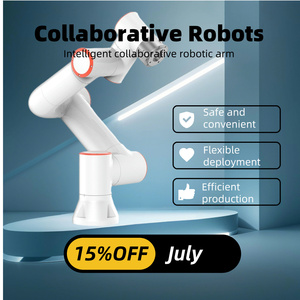(2436 products available)









































































































































































































CNC machines use a computer system to control the tools and process. There are various types of education CNC machines, such as CNC routers, vinyl cutters, laser cutters, and plasma cutters.
CNC Router:
A CNC router is like an ordinary CNC milling machine, but it usually has a larger work area. It is also able to use multiple tools. This machine will cut and engrave materials like wood, composites, plastics, aluminum, and other soft metals. CNC routers are mainly used in the sign-making and woodworking industries. However, they are also used to deal with other soft materials.
CNC Laser Cutter:
A CNC laser cutter uses a focused beam of light to cut or engrave materials with high precision. The most common materials for CNC laser cutters are metal, plastic, wood, acrylic, and fabric. An education laser cutter CNC is a popular option for makerspaces and educational institutions. It is because these devices can allow students to learn about technology and design. It also helps them gain practical skills.
CNC Laser cutters are used across different industries to precisely cut, engrave, or mark materials. These tools provide a permanent engraving that does not rub off, making them ideal for identification products.
CNC Plasma Cutter:
A CNC plasma cutter is a type of machine that is used to cut through electrically conductive materials by using plasma arcs. It is usually used in the automotive and aerospace industries. A CNC plasma cutter can make complex cuts quickly and accurately. It is also a great option for users who need to deal with thin to thick metal sheets.
In insert education, a plasma cutter is used to teach students about the advanced manufacturing processes and design-oriented thinking. Students have the opportunity to explore their creativity freely. They can also learn how to use this tool.
CNC Vinyl Cutter:
A vinyl cutter, which is also referred to as a sign maker, is an automated device that cuts graphics out of vinyl and other thin materials. It is controlled by a computer and is widely used to make signs, decals, and automotive and custom design applications. The vinyl cutting education CNC machine operates by using a blade to follow a pre-programmed design. It then drags and lifts the material. This creates an outline that is then removed from the surface of the vinyl material.
In addition to the features above, a CNC machine usually has some other features to facilitate its maintenance.
As with any technical device, an education CNC machine also varies depending on the type and model. However, some general maintenance tips are applicable to all machines.
CNC (Computer Numerical Control) machines are widely used worldwide in educational settings and various other industries.
Vocational training institutes
CNC machines are used for vocational training programs in vocational training institutes. Specifically, education CNC milling machines, for instance, instruct trainees on how to operate, program, and maintain different types of CNC machines. This helps the trainees develop practical skills that can be used in manufacturing and also make them employable.
Engineering and technical colleges
Colleges that offer engineering and technical courses have to use CNC machines to teach students about machining concepts. The students get hands-on experience with the machines and also learn how to program them. When done right, this will enable the students to design complex parts and understand manufacturing processes.
Robotics and mechatronics
CNC machines are used in courses and programs that teach robotics and mechatronics. Students learn how to integrate and design robotic systems with CNC technology. They also build and construct robotic arms that are CNC -controlled. These students can gain skills in automation and robotics.
Art and design schools
Design schools that teach students about sculpture and product design can have CNC machines. The schools mostly use CNC milling and routing machines to help students create customized prototypes, architectural models, and intricate designs. This gives the students the chance to explore their creativity and think critically.
Workshops and Fab Labs
Education CNC machines are found in fabrication laboratories and workshops. The machines are mainly used for hands-on projects. Students can manufacture physical objects by prototyping them using the CNC machines. They can also acquire practical skills, creativity, and problem-solving skills.
Distance Learning and Online Education
Distance learning and online education platforms can have CNC machines with remote access or simulation software. The students can use them to learn about the programming and operation of the machines. Moreover, the students can participate in interactive CNC machining lessons from the comfort of their homes.
When choosing a suitable CNC machine for education purposes, there are some important factors to consider. These factors will ensure that the machine will be useful for the curriculum and will be easy for the students to work with.
Q1: Why are CNC machines used in education?
A1: CNC machines are used in education to teach students programming, design, problem-solving, and critical thinking skills. They are also used to enhance hands-on learning, foster creativity and innovation, and prepare students for careers in manufacturing and engineering.
Q2: What materials can CNC machines work with?
A2: Generally, CNC machines are capable of working with a wide range of materials. Depending on the specific type and design, those may include metals, wood, plastic, foam, composites, ceramics, and glass, among others. Nonetheless, as according to their distinct capabilities and specifications, not all CNC machines can handle every type of material.
Q3: How do CNC machines benefit education?
A3: Education CNC machines offer several benefits: they improve students' technical skills and digital literacy; integrate STEM education; promote experiential learning; develop soft skills, enhance collaboration, and prepare for the workforce.